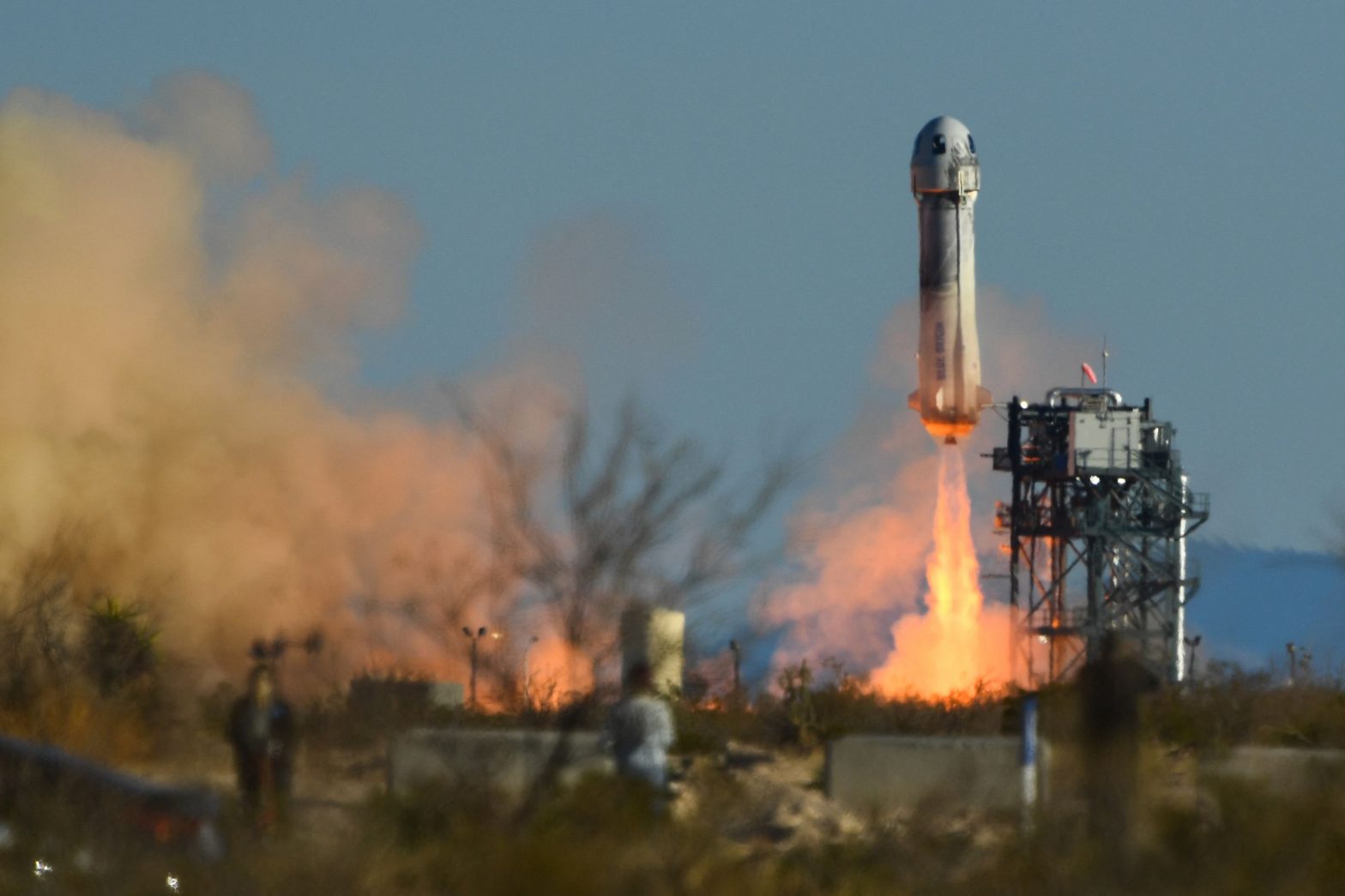/
Blue Origin’s RSS Kármán Line will fly for the first time as the company works toward mounting a real challenge to SpaceX.
Share this story
:format(webp)/cdn.vox-cdn.com/uploads/chorus_asset/file/25659896/1239643418.jpg)
Blue Origin is preparing to launch its NS-27 mission with the RSS Kármán Line, its new crew capsule, on Monday at 9AM ET. It will be the first launch for the capsule, which the company says in its announcement will have improved performance and reusability, along with “an updated livery, and accommodations for payloads on the booster.”
The flight will carry two LIDAR sensors into space that will be used for Blue Origin’s Lunar Permanence program to develop Moon landers. Those are among 12 payloads that also include ultra-wideband proximity operations sensors, a reproduction of the black monoliths from 2001: A Space Odyssey, and student postcards submitted to its Club for the Future nonprofit. Blue Origin will stream the launch on its website, starting 15 minutes before liftoff.
If Monday’s launch takes place as planned, it will be the second New Shepard flight since May, when the company carried out its first crewed launch since 2022. Blue Origin completed another New Shepard mission in August.
NS-27’s next flight comes as Blue Origin works toward the goal of becoming a real SpaceX competitor. Company CEO Dave Limp, the former Amazon hardware boss who took over late last year, said the company needs to “be able to build things a lot” to become “a world class manufacturer” in an interview with CNBC.
“We’d like to [be delivering] about an engine a week by the end of the year. I’m not sure we’ll get exactly to a week, but it’ll be sub-10 days … [and] by the end of 2025, we have to be faster than that,” Limp said.
Blue Origin plans to launch New Glenn, its big reusable booster that recently completed its first second-stage hot fire test, for the first time in November. Blue Origin says the rocket can deliver 45,000 kilograms (more than 99,000 pounds) into low Earth orbit, which CNBC notes is roughly double what SpaceX’s Falcon 9 can do. The company also hopes to land the booster on its first flight.
